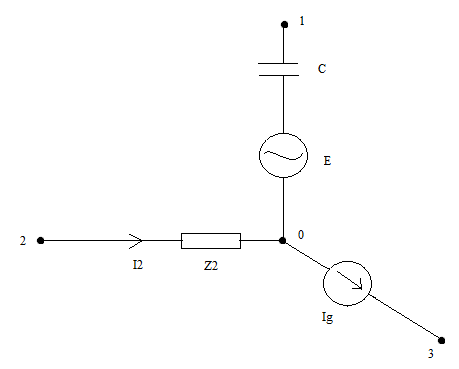For the part of the circuit of sinusoidal circuit given below, the following data is given (effective values): $$E=10V,I_g=2\sqrt 3 A,I_2=2A.$$
Impedance of conductor is $$Z_C=5\Omega.$$
Current Ig is leading in phase with regards to E for 2pi/3, and E is running late in phase with regards to I2 for pi/2.
Evaluate effective value of voltage U10.
I think that the following intuitive solution is completely incorrect:
By using potential of nodes method on branch 1-0, if we set 0 node as referent, we have: $$\underline{V_1}\frac{1}{\underline{Z_C}}=\frac{\underline{E}}{\underline{Z_C}}\Rightarrow \underline{V_1}=\underline{E}$$
Could someone explain why this solution is incorrect?
What is a correct approach?

